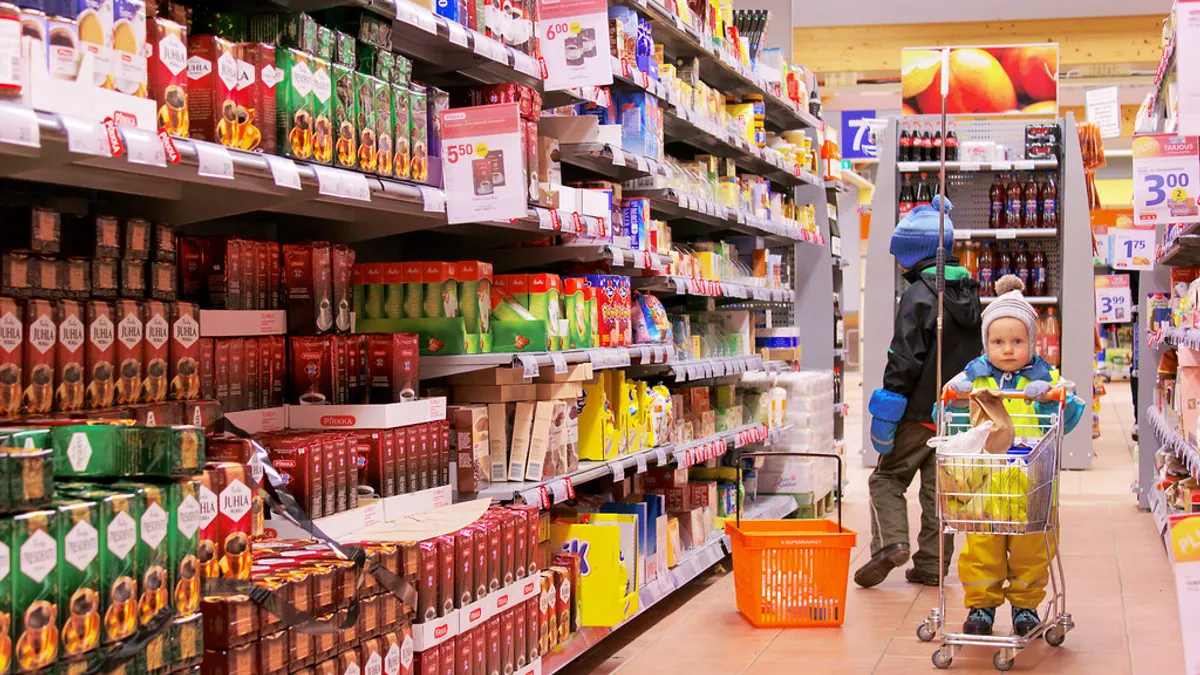Dive Brief:
- Already beset by waning customer demand, many CPG companies are now under pressure from retailers to lower their prices further, according to The Wall Street Journal. Campbell Soup, for one, told The Journal it will lose significant revenue this winter because it failed to reach an agreement with a major retailer — identified by the Journal as Walmart — on promotional pricing and shelf space.
- Under intense competitive pressure themselves, retailers large and small are lowering prices to draw customers to their stores. And although back-and-forth negotiations between grocers and manufacturers over pricing is nothing new, sources agree retailers have gained the upper hand.
- Walmart, which accounts for as much as one-fifth of sales for General Mills, Kellogg and Kraft Heinz, has been particularly aggressive with price cuts lately. The company has said it wants to be 15% cheaper than the competition 80% of the time.
Dive Insight:
According to manufacturers interviewed by The Wall Street Journal, not only is Walmart demanding ever lower prices from suppliers, but will also occasionally drop prices without letting suppliers know — prompting other retailers to demand the same price.
Such is the power of Walmart, which is squeezing manufacturers at unprecedented levels in a highly competitive, price-focused grocery industry. The approach has paid dividends for the company, which recently reported its highest grocery comps in five years. For CPG companies like Campbell and General Mills, though, the strategy translates into diminishing returns.
And it’s not just Walmart that’s pressuring beleaguered suppliers to lower their prices. Conventional chains like Kroger have becoming increasingly price promotional of late, as have smaller chains and specialty stores like Sprouts Farmers Market. During the company’s most recent earnings call, Sprouts CFO Brad Lukow said increasing competition demanded the price cuts.
Suppliers can fight back, of course, and have successfully in the past. But their lackluster sales, combined with the fact that retailers ultimately control the shelf space, mean their position is very weak right now. Pressured from all sides, CPG companies are innovating, acquiring promising brands, exploring direct-to-consumer channels and, ultimately, desperately searching for growth.
Things don’t look likely to improve anytime soon. As retailers push for lower prices from manufacturers, they’re also expanding their private label selection, which offers better margins and have become increasingly sophisticated over the years. Store brands make up roughly a quarter of Kroger’s sales, for example, and the company says it wants to continue expanding lines like Simple Truth and Private Selection.
There’s also another big player in the industry now: Amazon. The e-tailer doesn’t have a history of playing nice with brands, so it’s not hard to imagine it becoming even more demanding as it expands in grocery. Because the company accounts for significant sales, manufacturers will have to adjust — and many already are. Some CPG companies have hired former Amazon workers, while many others are optimizing their packaging and delivery capabilities to compete. According to a recent New York Times story, a cottage advertising industry has sprung up around improving company's product listings on Amazon.








